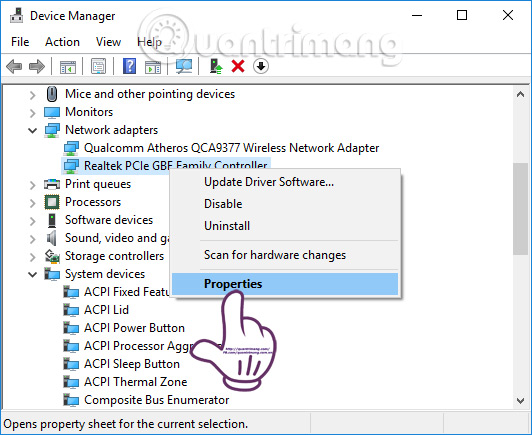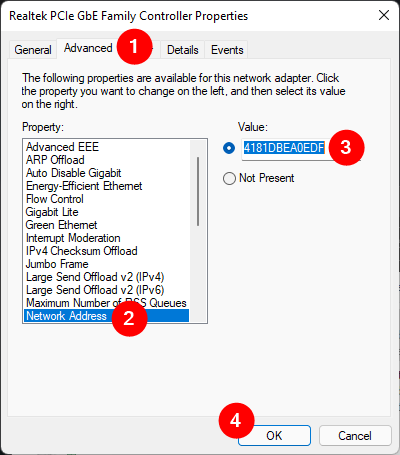

Disable your network adapter and enable it again.


If that entry doesn’t exist, right-click blank area to create a String value with the name NetworkAddress.Ĭlose Registry Editor. Look for the registry entry NetworkAddress in the right pane, and change the value as your new MAC Address. You have to click each subkey to check the DriverDesc value that matches with your network card. You should see several subkeys with names such as 0000, 0001, etc. HKEY_LOCAL_MACHINE\SYSTEM\CurrentControlSet\Control\Class\
#Change mac address windows 7 powershell windows 10
Method 2: Change MAC Address on Windows 10 / 8 / 7 from Registry Editor You should see the new MAC address show up in the line starting with “ Physical Address“. To confirm your change, open the Command Prompt and type ipconfig /all and hit Enter. Select the Value radio box and enter your new MAC address. Within the Property list, scroll down until you find the “ Network Address” or “ Locally Administered Address” property.

Other network adapter properties may be set by using a cmdlet such as the Set-NetAdapterRss, Set-NetAdapterLso, or Set-NetAdapterAdvancedProperty cmdlets. These changes could disrupt proper networking functionality. There we go – one neat and simple way to get duplicate objects from any set of data based on the values of a given property. The Set-NetAdapter cmdlet sets the basic properties of a network adapter such as virtual LAN (VLAN) identifier (ID) and MAC address. Get-VirtualNetworkAdapter -All -vmmserver $servername | group -Property PhysicalAddress | ? ” pipeline section shows another very nice feature of PowerShell: if you return multiple sets of objects which are of the same type, it re-concatenates all the sets back into a single set. Once you’ve done this you can get duplicate MAC addresses (known as the “Physical Address” in SCVMM) like this: If you’re working with the System Centre Virtual Machine Manager (SCVMM) you first need to add the required snap-in to manage it in PowerShell:Īdd-PSSnapin As they have a large set of machines this would require a script and PowerShell was perfect for the task. I had reason to use this today as our IT team was trying to validate their virtual machines to ensure there were no conflicts due to duplication of the virtual MAC addresses. A little known fact is that you can use the group filter in PowerShell to very easily find duplicates in a set of objects based on a given object property.


 0 kommentar(er)
0 kommentar(er)
